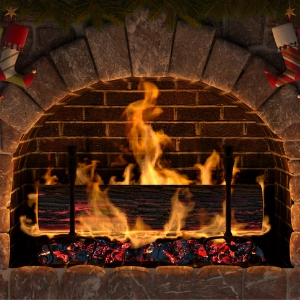The Best Firewood

Not all fires are equal. Did you know the type of wood you burn may affect how much you have to keep on hand and some wood types can actually minimize the amount of smoke produced? What type of wood tops the list for in-home fireplace burning and overall enjoyment? Here are the most popular options and the performance you can expect from each:
- Maple – Great for fireplaces, wood burning stoves and bonfires, maple burns very hot and consistently due to how dense it is. It is a heavy wood and can be difficult to split and ignite. It produces very little smoke, but burns best when seasoned for at least one year.
- Oak – Perfect for indoor and outdoor wood burning. Oak is abundant, moderately priced and considered one of the best species for firewood. It can be difficult to ignite when not dried properly, but when it has been, it will burn hot and slow. Season your oak for at least one year and prepare to enjoy a low smoke fire.
- Cherry – This is a popular choice due to its pleasant, non-smoky aroma, but prepare to pay as it typically costs a little more than the average wood. Cherry wood is easy to split and usually burns at a medium heat. Don’t forget your fireplace screen guard as this wood tends to spark.
- Birch – With its paper-like bark, this wood is best as a fire starter and burned along with other slow burning hardwoods to maximize its high burning heat. It is one of the cheapest woods to purchase and can be used both indoor and outdoor.
- Pine – While this wood is very inexpensive, readily available and seasons quickly, be prepared to keep a lot of it on hand, as it burns quickly and does not produce the heat of hardwoods. This wood can be dangerous to use indoors due to its high sap content. Sap pockets explode while burning, creating loud pops and sparkling, making it more suitable as an outside wood. It is a messy burn and is should not be used as an exclusive firewood.
- Elm – Like maple, elm is a very dense wood, but unlike maple, it has a medium heating temperature. Elm does not produce a lot of ash, it is abundant and inexpensive, but it is hard to split and can leave a strong, unique aroma.
- Chestnut – This wood can be used indoors, but is mainly considered an outdoor wood due to the amount of smoke it produces. Chestnut is moderately priced and is easy to split, but it does not burn as hot as other woods. If you do decide to burn it in your indoor fireplace, use your screen guard, as it tends to spark.
- Walnut – This is an excellent firewood. It burns a long time and puts out very little smoke. It has a medium density and is typically easy to start. It has a pleasant aroma and burns clean, making it a favorite, but it does not hold the same British thermal units (BTU) value as other hardwoods such as oak.
- Western Red Cedar – A softwood that burns at a low heat, cedar makes a great starter wood that burns quickly and cleanly, but is not recommended as an exclusive firewood choice. Pockets of cedar oils will cause pops and spits of fire sparks and embers, so even when only using it as a fire starter, remember your screen guard.
When it’s time to roast some marshmallows and cuddle up by the fire, the overall winner is oak wood. It burns hot, slow, produces less smoke and is available anywhere in North America. You can use it indoors and outdoors and it won’t break the bank. No matter which type of wood you choose to use in your indoor fireplace, remember to burn safely and get your fireplace inspected annually. Learn more about how to prevent fireplace dangers with our article Keep the Home Fires Burning – In the Fireplace, That Is… and make sure you have the proper homeowners coverage, just in case the unexpected happens.
Share This: